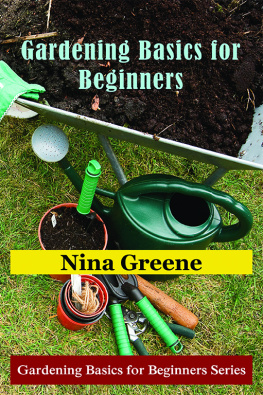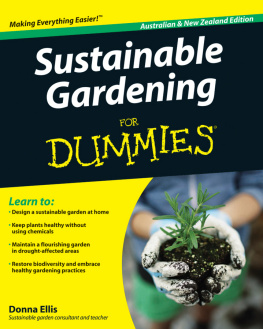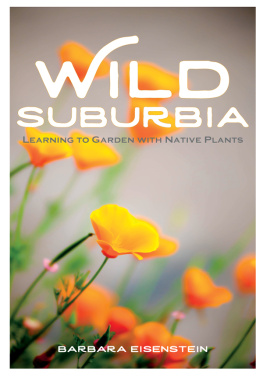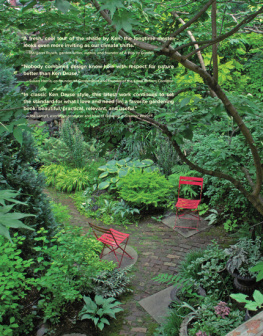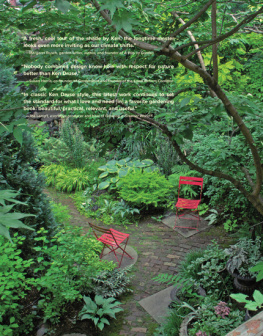High-Impact, Low-Carbon Gardening


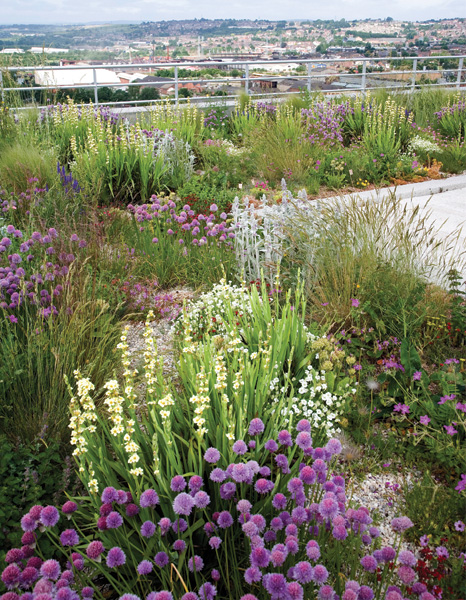
High-Impact, Low-Carbon Gardening
1001 WAYS TO GARDEN SUSTAINABLY
ALICE BOWE

Frontispiece: (right) Garden Collection/Jane Sebire; (left, above and below) Alice
Bowe. Opposite: Garden Collection/Neil Sutherland. : (left) Alice Bowe; (right)
Garden Collection/Andrew Lawson. : (left) Woodhouse
Natural Pools; (right) Hugo Bugg Landscapes. 66,
14 iStockphoto.com
All photographs are by Alice Bowe unless otherwise credited.
Copyright 2011 by Alice Bowe. All rights reserved.
Published in 2011 by Timber Press, Inc.
The Haseltine Building 2 The Quadrant
133 S.W. Second Avenue, Suite 450 135 Salusbury Road
Portland, Oregon 97204-3527 London NW6 6RJ
www.timberpress.com www.timberpress.co.uk
ISBN-13: 978-0-88192-998-0
Printed in China

Library of Congress Cataloging-in-Publication Data
Bowe, Alice.
High-impact, low-carbon gardening : 1001 ways to garden sustainably /
Alice Bowe. 1st ed.
p. cm.
Includes bibliographical references and index.
ISBN 978-0-88192-998-0
1. Sustainable agriculture. 2. Gardening. I. Title.
S494.5.S86B69 2011
635'.048dc22 2010048812
A catalog record for this book is also available from the British Library.



CONTENTS





Preface
HOW GREEN IS YOUR GARDEN?
Gardening is already pretty green, isnt it? Glancing out the window, I see shrubs, hedges, and trees soaking up carbon dioxide and breathing out oxygen. Like many gardeners, I was happy to get on with the job of making a beautiful garden without getting ensnared in what appears to be a complex and confusing tangle of issues relating to carbon emissions, climate change, and sustainability.
But it doesnt have to be so complicated and overwhelming. In this book I lay out ways anyone can reduce the environmental impact (and often the effort) of designing, planting, and tending a garden. Im not going to ask you to abandon everything you like about your garden. Im not going to ban your favourite plants or prescribe a certain look for all yardsand Im certainly not going to compromise on good garden design (although I may have a few stern words to say about leaf blowers). Instead I examine the key concepts of sustainable landscape design and introduce the questions you need to be asking so that you can make your own choices. I promise not to be preachy or overbearing.
Well start by looking at the basic principles of sustainable landscaping and how it differs from conventional landscaping. Well look carefully at the management of water and compost, the sustainable gardeners two most precious natural resources. Then I talk a fair bit about choosing landscape materials. They all have an environmental impact, but some are more eco-friendly than others. Ill show you how to evaluate the degree of sustainability of each option whether you are choosing for paths, walls, decks, or driveways.
The heart of any garden is the planting. Ill introduce you to plants that can cope with extremes of weather and to the bimodal plants (which can cope with both flood and drought). We will look at the planting options and pruning tricks that will help plants cope with unpredictable weather conditions, and Ill be revealing the storm-tolerant alternatives to traditional garden classics from topiary to espaliers.
Well also look at how you can improve the green credentials of your existing space, from ideas for green roofs and natural swimming ponds to pointers on how to improve your soil, encourage biodiversity, and maintain your garden efficiently. Above all, I give you practical advice and all the information youll need to go out and make the right choices. Well talk about cost-effectivenesspractical means real-world afford-ableand supporting local economies. In all youll find hundreds of tips and ideas, from easy things you can do now to deeper green possibilities you can aim for later.
Dont let buzzwords like green,sustainable, and eco-friendly put you off. This is essentially a book about making sound garden design choices. Let me show you how careful, considered thought about plants and materials often leads to innovative design, cost savings, and better results. Anyway, thats it for the quick tourlets get started.
1
Improving Your Gardens Ecological Credentials


Climate change, loss of biodiversity, and resource depletion are increasingly pressing concerns. It may seem that nothing you do could possibly make a difference, but there are a number of simple choices you can make that will have a significant effect on the sustainability and ecological impact of your garden and its ability to cope with unpredictable weather conditions.
In this chapter youll get an overview of how to redesign your garden both to improve its ecological credentials and to cope with a changing climate. Well talk about some simple changes that can make a big difference and examine the idea of whole-system thinking as the basis of a sustainable landscape. Then youll start right in with getting your garden down on paper and entertaining some ideas for hard landscaping and plants that make wise use of resources.
Why Bother?
Why should you care about improving your gardens ecological credentials? Green spaces provide a variety of benefits, many of which we take for granted. They make us happy and relaxed, help to foster a sense of community, and, according to some researchers, even reduce crime. In addition, a healthy landscape can actively improve our environment, by cleaning our air and water, moderating the temperature, and supporting wildlife.
Next page

